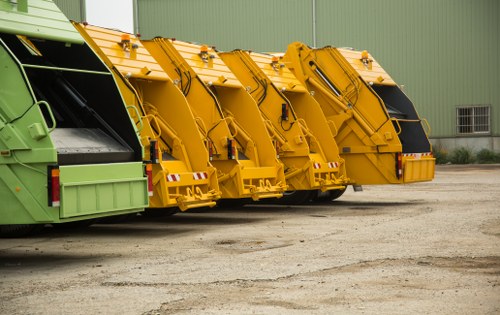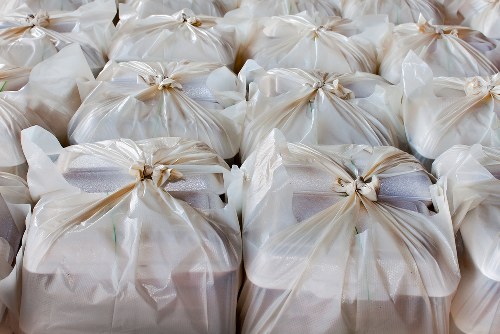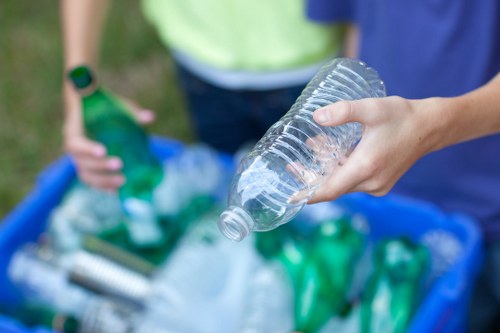Bed Disposal in Waste Recycling

The Importance of Proper Bed Disposal
Every year, millions of beds are discarded, contributing significantly to household waste. **Proper bed disposal** is not only crucial for maintaining environmental sustainability but also plays a vital role in resource conservation. By ensuring that beds are disposed of responsibly, we can reduce landfill waste and promote recycling practices that benefit our planet.
Improper disposal of beds can lead to severe environmental consequences. Beds often consist of materials like metal, wood, textiles, and foam, which require specialized recycling processes. When these materials are not handled correctly, they can release harmful substances into the environment, negatively impacting air, water, and soil quality.
Moreover, responsible bed disposal aligns with global efforts to promote a circular economy. A circular economy emphasizes reusing and recycling materials to minimize waste and reduce the demand for new resources. By adopting proper bed disposal methods, individuals and businesses can contribute to this sustainable model, fostering a healthier and more sustainable future.

Methods for Bed Disposal
Recycling Options
Recycling is one of the most effective methods for bed disposal. Various components of a bed can be recycled, provided they are processed correctly. **Metal frames** are often made of steel or aluminum, which are highly recyclable materials. Recycling metal reduces the need for mining new resources and minimizes energy consumption.
**Wooden bed frames** can also be recycled, especially if they are made from solid wood. Wood recycling involves processing the material into mulch or compost, which can be used for landscaping or as a soil amendment. Additionally, reclaimed wood can be repurposed for other construction projects, extending its lifecycle and reducing waste.
**Textiles and foam** from mattresses can be challenging to recycle but are not impossible. Specialized recycling facilities can break down these materials into their constituent parts, allowing them to be reused in various products. For instance, foam can be transformed into carpet padding or insulation material, while textiles can be used in manufacturing new fabrics or cleaning rags.

Donation and Reuse
Another viable option for bed disposal is donating or reusing beds that are still in good condition. Many charitable organizations accept gently used beds and mattresses, offering them to individuals and families in need. Donating a bed not only helps reduce waste but also supports community initiatives aimed at providing essential furnishings to those who require them.
Before donating a bed, it is essential to ensure that it is clean and free from any damage or infestations. Some organizations may have specific guidelines regarding the types of beds they accept, so it is advisable to contact them beforehand to confirm eligibility. Additionally, donating a bed can offer significant benefits, such as tax deductions and the satisfaction of contributing to a worthwhile cause.
Reusing beds within the household is also an option worth considering. For instance, an old bed frame can be repurposed as a stylish bench, bookshelves, or other functional furniture pieces. This approach not only reduces waste but also adds unique and personalized elements to your home decor.

Challenges in Bed Disposal
Materials and Composition
One of the primary challenges in bed disposal is the diverse range of materials that constitute a bed. Beds typically consist of metal, wood, textiles, foam, and sometimes electronic components. Each of these materials requires specific recycling processes, making the overall disposal process more complex and resource-intensive.
**Composite materials** used in modern beds, such as engineered wood and synthetic fabrics, can be particularly challenging to recycle. These materials often contain adhesives, coatings, and other substances that complicate the recycling process. As a result, specialized facilities and advanced technologies are necessary to handle and recycle these composite materials effectively.
Furthermore, the presence of hazardous materials like flame retardants in mattresses can pose environmental and health risks during disposal. Proper handling and recycling of these materials are essential to prevent the release of harmful chemicals into the environment.

Local Regulations and Policies
Local regulations and policies significantly influence bed disposal practices. Different municipalities have varying rules regarding the disposal and recycling of bulky waste items like beds. These regulations can dictate how beds must be prepared for disposal, the types of facilities available for recycling, and any associated fees or permits required.
Compliance with local disposal regulations is crucial to ensure that beds are disposed of legally and responsibly. Failure to adhere to these guidelines can result in fines, penalties, or environmental harm. Therefore, understanding and following local policies is essential for individuals and businesses engaged in bed disposal.
In addition to municipal regulations, environmental policies and initiatives at the local, state, and national levels can impact bed disposal practices. Incentives for recycling and sustainable disposal methods can encourage more responsible behaviors, while stricter regulations can enforce higher standards for waste management.
Steps to Dispose of Your Bed Responsibly
Preparation for Disposal
Proper preparation is a critical first step in responsible bed disposal. Start by disassembling the bed into its constituent parts, such as the frame, mattress, headboard, and footboard. This process simplifies transportation and ensures that each component can be treated according to its material type.
**Cleaning and sanitizing** the bed before disposal is also essential. Remove any stains, debris, or personal items from the mattress and frame. Sanitizing the bed helps prevent the spread of allergens, pests, and odors, making it more suitable for donation or recycling.
Additionally, consider documenting the bed's condition, especially if you plan to donate it. Taking photographs and noting any damages can facilitate the donation process and ensure transparency with recipient organizations.
Choosing the Right Disposal Method
Selecting the appropriate disposal method depends on several factors, including the bed's condition, local recycling options, and personal preferences. Evaluate whether the bed is in good enough condition for donation or if it should be recycled via municipal services or private recycling facilities.
For beds eligible for donation, contact local charities, shelters, or non-profit organizations to arrange for pickup or drop-off. Ensure that the bed meets the organization's requirements to avoid unnecessary waste.
If recycling is the preferred option, research local recycling centers that accept bulky items like beds. Some municipalities offer curbside pickup services for large waste items, while others may require scheduling a special collection. Verify any associated costs and prepare the bed accordingly for efficient disposal.
Benefits of Proper Bed Disposal
Environmental Benefits
Proper bed disposal offers numerous environmental benefits. Recycling bed materials reduces the demand for virgin resources, conserving natural habitats and reducing the energy consumption associated with manufacturing new products. By diverting beds from landfills, we minimize the production of methane and other greenhouse gases that contribute to climate change.
Additionally, recycling materials like metal, wood, and textiles helps conserve biodiversity by reducing the need for raw material extraction. This conservation effort protects ecosystems and supports the sustainability of natural resources for future generations.
Community Benefits
Responsible bed disposal also yields significant community benefits. Donating beds to charitable organizations can improve the quality of life for individuals and families in need, providing them with essential furnishings that support their well-being and comfort.
Moreover, promoting bed recycling and disposal initiatives fosters a culture of sustainability within the community. Educational campaigns and accessible recycling programs can encourage more residents to adopt eco-friendly disposal practices, leading to a collective effort in minimizing environmental impact.
**Economic advantages** are another aspect of proper bed disposal. Recycling materials can create jobs in the recycling and waste management sectors, contributing to the local economy. Additionally, reducing landfill usage can lower municipal waste management costs, allowing resources to be allocated to other community needs.
Conclusion and Call to Action
Proper bed disposal in waste recycling is a critical component of environmental stewardship and resource conservation. By adopting responsible disposal methods, individuals and businesses can significantly reduce their environmental footprint, support community well-being, and promote sustainable practices.
Whether opting for recycling, donation, or reuse, making informed decisions about bed disposal ensures that materials are handled appropriately and that valuable resources are preserved for future use.
**Don't wait until your old bed becomes a burden on the environment.** Contact us today to learn more about responsible bed disposal options or to schedule a service that aligns with your sustainability goals.